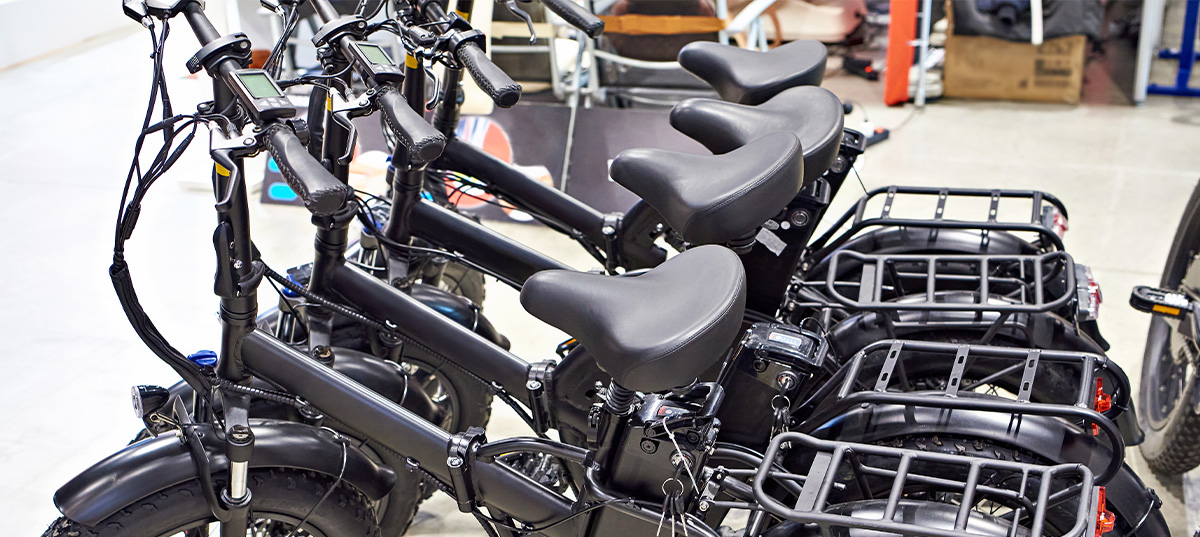Table of Contents
- What are hazards associated with lithium-ion batteries?
- How can you safely store lithium-ion batteries?
- Responsibilities as a Building Owner
- Staying Up-to-Date with Battery Safety
Lithium-ion batteries can be found in a growing number of products, including automobiles, power tools, vacuums, E-Bikes/E-Scooters, portable electronics, and energy storage systems for buildings. These batteries are considered efficient due to their rechargeable qualities that classify them as “secondary” batteries, compared to “primary” batteries that can only be used until they are depleted. As more and more day-to-day items turn to this type of energy storage system, let’s identify some of the concerns and controls.
What are hazards associated with lithium-ion batteries?
There are two typical fire hazards associated with lithium-ion batteries:
- “Thermal Runaway”—the rapid self-heating of a cell that results in an exothermic reaction (release of stored energy). The extent of this exposure will depend on a battery’s state of charge (SOC), cell capacity and cell chemistry as not all lithium-ion batteries use the same materials and electrolyte volume.
- The ignitable electrolyte in this type of battery also poses a risk. The electrolyte in primary batteries like nickel or lead acid batteries is not ignitable.
A higher likelihood of fire involving lithium-ion batteries occurs during the charging stage, or once the batteries are fully charged, often due to mechanical failure from a damaged battery pack or inadequate ventilation. Lithium-ion battery failure in storage may be the result of external sources like fire, which causes excessive heat leading to thermal runaway, or from mechanical damage caused by impacts like a collision with a forklift or being dropped.
How can you safely store lithium-ion batteries?
To reduce the risk of a battery catching fire or exploding, maintain these best practices in your workplace:
- Limit batteries in storage to approximately 30% State-of-Charge (SOC).
- Install in-rack sprinklers to prevent thermal runaway occurring as the result of a fire.
- Verify the health of batteries upon receipt by inspecting them for visible mechanical defects.
- Routinely inspect batteries using an infrared camera for signs of elevated temperatures which could cause thermal runway.
Responsibilities as a Building Owner
If you’re the owner of a residential building where tenants may be storing E-Bikes or scooters indoors, educate your tenants about the risks associated with lithium-ion batteries and communicate proper charging techniques.
According to Jason Ostapeic, Team Lead, Risk Control at Unica, many of the losses involving secondary batteries are entirely preventable. “We’ve seen several losses in the commercial sector that happened because of improper use and storage. The use of off-brand lithium-Ion batteries has often been a source of fires in residential homes and apartments, yet these same batteries are being stored or charged in industrial buildings.”
Sharing a few simple tips can go a long way in preventing fires:
- Only use manufacturer-approved and CSA certified chargers and batteries
- Charge lithium-ion batteries at room temperature and away from direct sunlight
- Only charge batteries or use devices on hard surfaces such as tabletops or floors—soft surfaces can trap heat and lead to a fire
Commercial building owners operating warehouses or retail plazas should also be vigilant and spread awareness of proper care and safety. This is especially important for businesses storing inventories of E-Bikes and other lithium-ion battery-powered devices, or retailers stocking these items in-house.
Staying Up-to-Date
There is ongoing research on lithium-ion batteries by the National Fire Protection Association and other safety groups. As the usage and technology around these secondary batteries continues to transform, it’s important to stay educated on the risks and practices associated with them.
For additional information on lithium-Ion battery safety, please visit the Canadian Centre for Occupational Health and Safety:
https://www.ccohs.ca/oshanswers/safety_haz/battery-charging-lithium-ion-batteries.html



